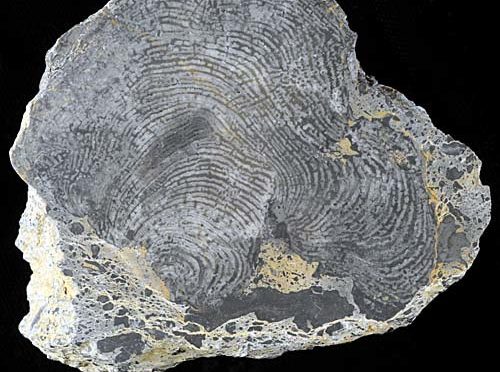| Class: | 5C |
| Name: | Summie Sit |
| Year: | 2017 – 2018 |
|
地質年代:元古宙 (超過35億前)
|
Geological Age: Proterozoic
(more than 3.5 billion ago) |
| 形成:
微生物(藍細菌,一種單細胞利用光合作用維生的微生物) 一開始就定殖在地衣或藻類的表面。 隨著時間的推移,沉積物沉積在其頂部,上述過程進一步重複。 這些生物膜沉積層積累並通過壓實和膠結處理。 在這種情況下,殖民的微生物是藻類,因此岩石被稱為藻類疊層石。 |
Formation: Microorganism (cyanobacteria, a single-celled photosynthesizing microbe) colonizes on the surface of lichen or algae in the beginning. As time pass by, sediments are deposited on their top, the above process is further repeated. These biofilms sediment layers accumulated and were processed by compaction and cementation. In this case, the microorganism colonized were algae so that the rock is known as algae stromatolite. |
| 特性:
岩石呈層狀結構,其中含有剩餘的有機物(藻類),可以變平,呈丘狀或呈圓頂狀,有時候是交替的淺色和深色,它不含有任何互鎖結晶和無礦物成分。
|
Properties:
The rock is in a layer structure which contains remaining organism (algae), it can be flattened, hummocky or in a dome-shaped, sometimes alternating light and dark color, it does not contain any interlocking crystal and no mineral content.
|
| 分佈:(岩石) (礦物)
藻類疊層石是世界上最古老的生物,所以很難交易最原始的地點。 然而,現代藻類疊層石可以在位於澳大利亞西部的鯊魚灣找到,也可以在美國黃石國家公園的溫泉,南極的湖泊以及西印度洋。
|
Distribution: (Rock) (Mineral)
Algae Stromatolite is the longest living organism in the world, so it’s hard to trade the most primitive location. However, modern Algae Stromatolite can be found in Shark Bay, located in Western Australia, also the thermal springs of Yellowstone National Park in the US, lakes in Antarctica, as well as the western Indian Ocean.
|
| 知多一點點:
|
More to learn:
|
